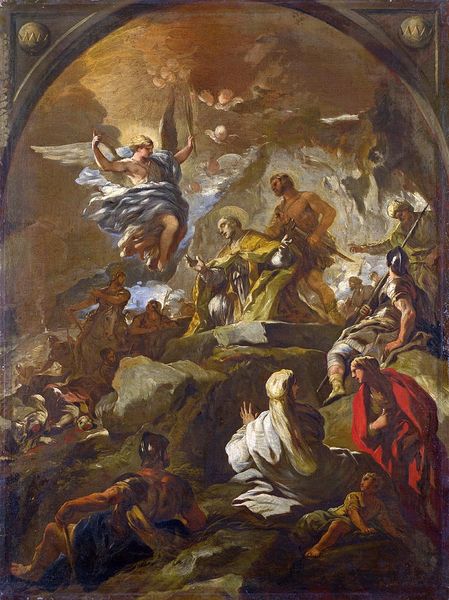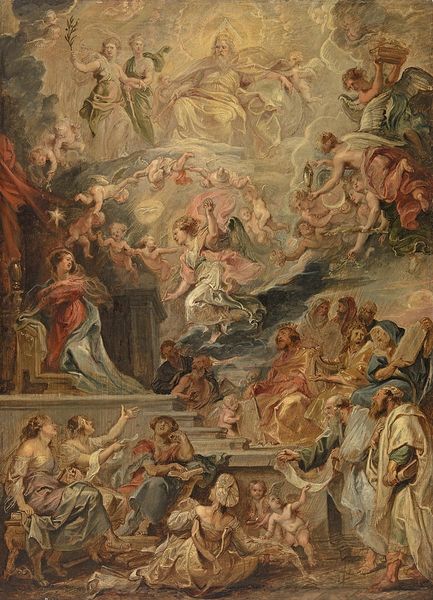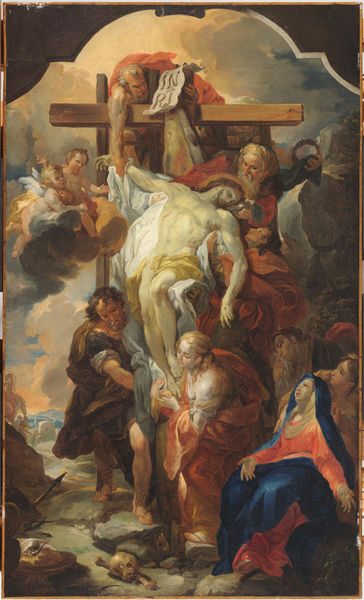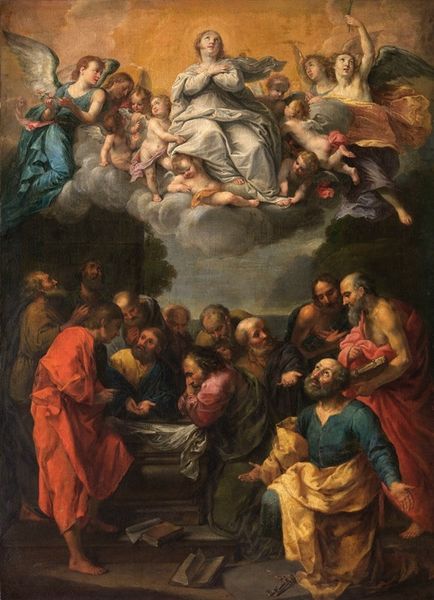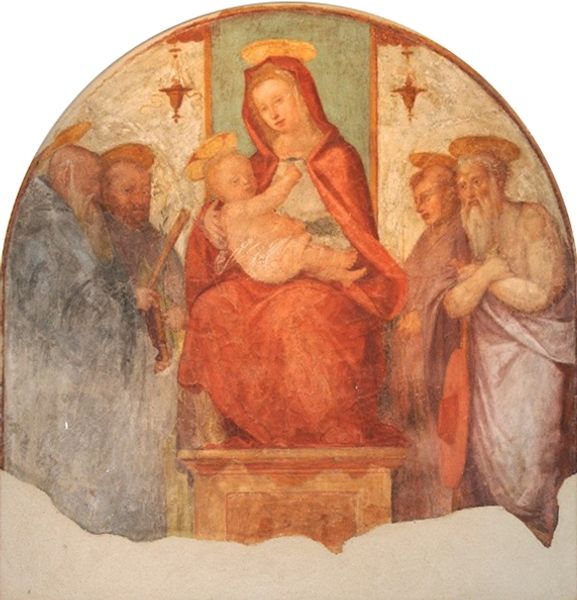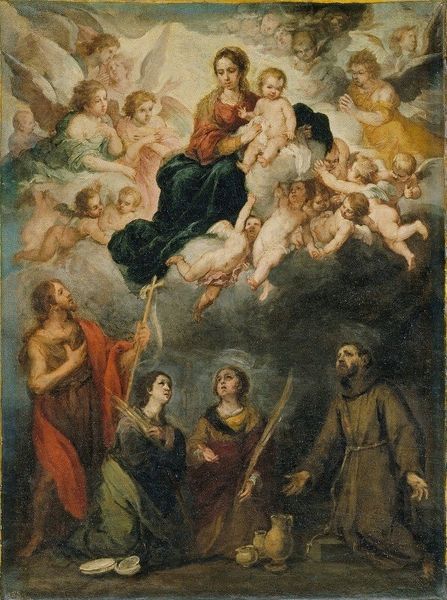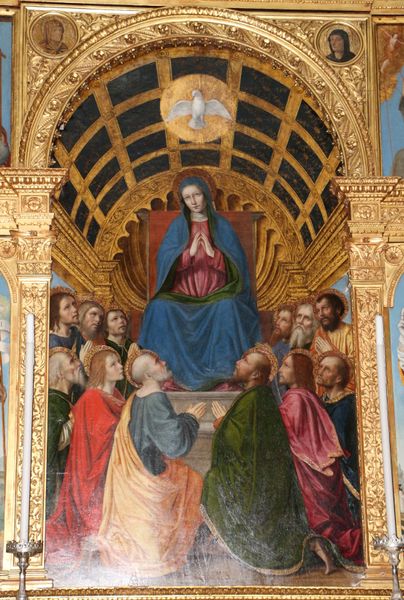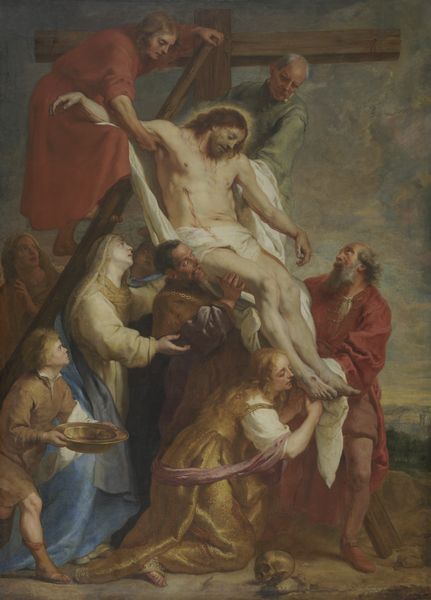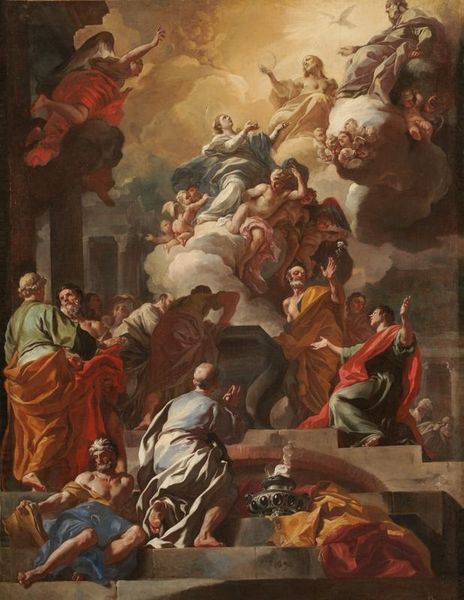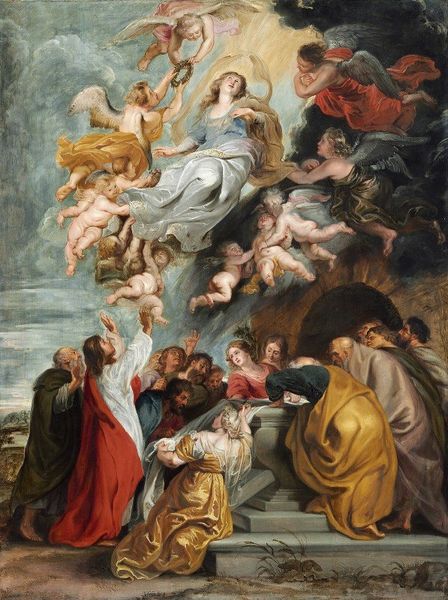
painting, oil-paint
#
allegory
#
baroque
#
painting
#
oil-paint
#
figuration
#
oil painting
#
history-painting
Copyright: Public Domain: Artvee
Curator: This oil painting by Peter Paul Rubens is entitled "The Glorification of the Eucharist," created around 1630 to 1632. The painting features an assembly of figures, heavenly beings and mortals alike, bathed in divine light. Editor: My first impression is one of almost overwhelming dynamism. Rubens uses his characteristic dramatic flair with this ascent, a swirl of bodies and light that pushes upward. It's a potent, visceral representation. Curator: It's crucial to remember the socio-political context. The work was commissioned during the Counter-Reformation, a period when the Catholic Church sought to reaffirm its doctrines in response to Protestant challenges. Understanding the work involves identifying how the Church sought to legitimize its power in fraught times. Editor: And how they did so visually is particularly potent. The Eucharist itself, as a symbolic center, takes on layers of meaning here. We have not just the holy sacrament, but its physical presence emphasized. Note, for example, that Rubens has painted the ascending figure of Christ holding what appears to be the Eucharistic host. It ties to centuries-old traditions associating bread and wine with sacrifice and communion. Curator: Exactly. By visually prioritizing Christ bearing a Eucharistic host above his followers, Rubens establishes the Catholic belief in transubstantiation as not just holy doctrine, but the only divine and valid pathway for the audience. In doing so, the canvas underscores how institutionalized religion has frequently exerted a firm control over bodies, narratives, and representation. Editor: Consider, too, the symbolism inherent in light versus darkness, earthly figures versus divine ones. The very composition argues for an established hierarchy with clearly prescribed routes of passage for power. Even Rubens' trademark dynamism directs the viewer's eyes ever upward. The upward movement suggests progression towards holiness while it glorifies Christ holding the Eucharist and therefore validates what it stands for. Curator: Your attention to symbolic structures deepens my understanding of this artwork in relation to religious and social issues of the era, thank you. Editor: And your framing the context allowed for deeper exploration. The painting really embodies the saying a picture is worth a thousand words.
Comments
No comments
Be the first to comment and join the conversation on the ultimate creative platform.
